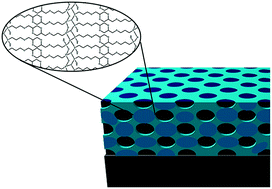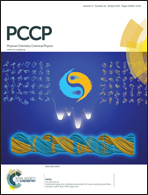Getting order in mesostructured thin films, from pore organization to crystalline walls, the case of 3-glycidoxypropyltrimethoxysilane†
Abstract
A new type of mesostructured hybrid organic–inorganic film has been synthesised by evaporation-induced self-assembly using 3-glycidoxypropyltrimethoxysilane as the precursor and a tri-block copolymer, Pluronic F127, as the template. The chemistry has been tuned to form bridged polysilsesquioxanes that self-organise into ordered lamellar structures. Controlled aging under highly basic conditions, which has been monitored by Raman and infrared spectroscopy, has been used to obtain the layered ordered hybrid structures in the precursor sol. The pH of the sol has been adjusted to form the micelles that act as templates during solvent evaporation. The self-assembly of the system has been studied in situ by small and wide angle X-ray scattering using a synchrotron light source, which has confirmed both the formation of hybrid layered structures and the long-range organization of the mesophase in the hybrid films. The present approach allows ordering the hybrid film on two different length scales; at the end of film processing, hybrid crystals are incorporated into the pore walls and the micelles are arranged within the films with long range order.


 Please wait while we load your content...
Please wait while we load your content...